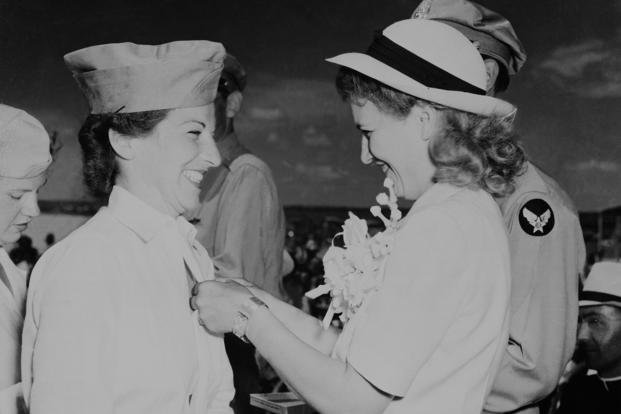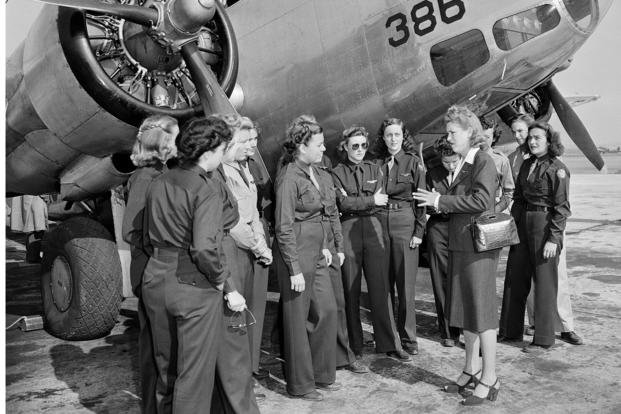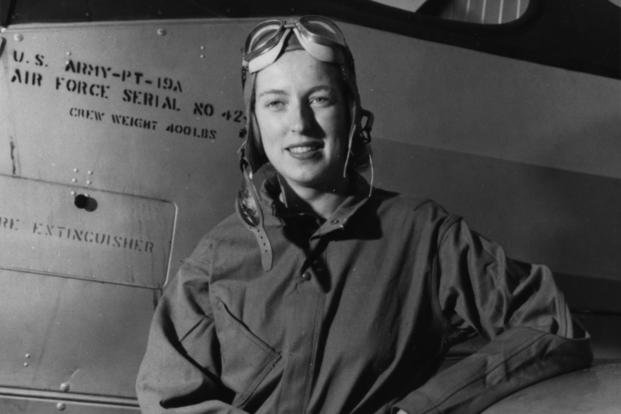It was Dec. 7, 1941, and Cornelia Fort was among the first to realize that the United States was under attack.
She was less than a year into her job as a flight instructor in Hawaii when she and her student pilot narrowly avoided a midair collision, saved only when Fort grabbed the controls and caused their single-engine plane to climb rapidly.
Not sure who the other plane belonged to, Fort's doubts were erased when she glimpsed Japan's rising-sun insignia on its wing, then noticed smoke over nearby Pearl Harbor.
Fort was killed on March 21, 1943, while serving with the Women Airforce Service Pilots, or WASP, becoming the first female American pilot to die while on active duty.
"Any girl who has flown at all grows used to the prejudice of most men pilots who will trot out any number of reasons why women can't possibly be good pilots," Fort once said, according to a PBS article about the 1999 "American Experience" documentary, "Fly Girls." "... The only way to show the disbelievers, the snickering hangar pilots, is to show them."
At first blush, Fort seemed an unlikely candidate to show them. From the time of her birth to a prominent Tennessee family in 1919, she lived in the lap of wealth. Fort shunned life as a socialite, though, her sense of adventure so strong that not even her family's 365-acre estate in Nashville could contain it.
When Cornelia was 5, her father took her and her brothers to watch a demonstration by a barnstorming pilot. A doctor and owner of a life insurance company, Rufus Fort -- worried about the risks -- asked his three sons to promise him they would never fly. It never occurred to him to exact the same pledge from Cornelia.
Once she got into the air, she was hooked. Shortly before she turned 21, Fort, who once attended the same school as Amelia Earhart, took her first flying lesson early in 1940, and by the end of the following year, she had earned her pilot's, commercial pilot's and instructor's licenses.
"I can't say exactly why I fly, but I know why as I've never known anything in my life," Fort was quoted as saying in "Fly Girls." "I know that in dignity and self-sufficiency and in the pride of skill."
Fort worked briefly at a flying school in Colorado before relocating to Honolulu to serve as a flight instructor for soldiers, sailors and defense workers. It was in that role that Fort found herself when Pearl Harbor was bombed. After the attack, the public was so interested in her eyewitness account that she was used to sell war bonds. She flew for the Civil Air Patrol before joining the Women’s Auxiliary Ferrying Squadron (WAFS), which the Army Air Forces established -- along with the Women's Flying Training Detachment (WFTD) -- in September 1942.

Organized by Jacqueline Cochran, who later became the first woman to fly faster than the speed of sound, the prospective female pilots were trained in the west Texas town of Sweetwater, where the days were long, snakes were as prevalent as the oppressive heat, and no dating was allowed. Six women were assigned to a room, and 12 trainees had access to one bath. They did not have time for extracurricular activities, not that any were available, during the four-month training program.
"Because there were, and are, so many disbelievers in women pilots, especially in their place in the Army, all of us realized what a spot we were [in]," Fort said. "We had to deliver the goods or else -- or else there would never be another chance for women pilots in any part of the service."
Women Airforce Service Pilots, created in August 1943 after WAFS and WFTD merged, flew at 126 military bases, handling 80% of all ferrying missions during the war while freeing men for combat. They accepted conditions that few male counterparts would abide, flying in repaired planes that had seen combat and facing incidents of sabotage -- sometimes with deadly consequences. After the death of two WASPs, an investigation found sugar in one of the downed plane's gas tanks.

Despite the overt discrimination, WASPs persevered, and as they displayed their proficiency, their responsibilities expanded to include becoming test pilots and flight instructors, and towing targets for gunnery training.
In the spring of 1943, Fort was among the pilots (both male and female) assigned to fly BT-13 trainers from Long Beach, California, to Dallas. At a stop along the way, some aviators discussed formation flying, a maneuver prohibited during such deliveries. That did not stop a small group, including Fort, from trying it.
About an hour from their destination, Fort's left wing was accidentally struck by another plane's landing gear, sending her fuselage into a spin before it plummeted to the ground near Sweetwater. A subsequent Army Air Forces investigation absolved Fort of fault, instead placing the blame on the male pilot, Frank Stamme Jr. Fort was 24 years old.
"If I die violently, who can say it's before my time?" Fort recalled in the “Fly Girls” documentary. "I want no one to grieve for me. I was happiest in the sky."
About 1,100 WASPs served during World War II, and 38 died. At the time of their service, they were considered civil servants -- an indignity that Congress finally removed by granting WASPs veteran status in 1977. The group received the Congressional Gold Medal in 2010.
Although WASPs were credited with flying more than 60 million miles, delivering nearly 13,000 aircraft and, outside of combat, flying every mission a male aviator did before the program was disbanded in December 1944, female pilots did not resurface in the U.S. military again until the mid-1970s. Just imagine how many Cornelia Forts were overlooked during those intervening years.
Want to Know More About the Military?
Be sure to get the latest news about the U.S. military, as well as critical info about how to join and all the benefits of service. Subscribe to Military.com and receive customized updates delivered straight to your inbox.
















